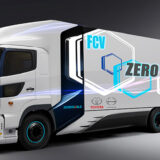GF-6 test development “essentially complete”
Test development has been the major stumbling block in the creation of the next major engine oil category, ILSAC GF-6. Even with an organisational structure change mid-journey, from ILSAC to AOAP, the fact that only one engine test remains unchanged from GF-5 to GF-6 is the defining factor in the extraordinary length of time spent developing the category – eight years and counting. ILSAC GF-6 includes seven new tests (four replacements and three new tests), more than any other classification.
Teri Kowalski, principal engineer at Toyota Motor North America, has confirmed that test development is “essentially complete,” allowing the category development process to progress to its next phase. Speaking at F+L Week 2018 in Macao on March 8, Kowalski outlined the status of ILSAC GF-6 and expected timings.
“All of the tests except Sequence IVB have been approved by ASTM Passenger Car Engine Oil Classification Panel and AOAP. We expect Sequence IVB to be approved in the next couple of weeks,” says Kowalski. API guidelines for base oil interchange and viscosity grade read across (BOI VGRA) have a significant effect on the amount of testing required. The API BOI VGRA taskforce has been active in developing the guidelines for the GF-6 tests. However, at this point “only Sequence IIIH and the LSPI test guidelines have been proposed, but not approved officially by API,” she says. Further testing is underway to develop guidelines for the remaining tests.
Establishing equivalence between replacement tests and older tests no longer in use is another important GF-6 task. For example, GF-5 requires the Sequence VID Fuel Economy (FE) test, though this is no longer available and has been replaced by the Sequence VIE FE test within ILSAC GF-6. To continue to license ILSAC GF-5 or API SN Resource Conserving oils – equivalence must be established between these two tests.
Despite the completion of engine tests, there is much left to do before ILSAC GF-6 becomes a reality. During her presentation, Kowalski specified the next step is the ACC Technology Demonstration Period, which could last anywhere from nine to 12 months. This will be followed by a negotiation to arrive at the final specification, and the setting of pass/fail limits – to be agreed within AOAP. A subsequent API mandatory waiting period (nine to 12 months) provides time to get oils qualified for the new specification.
Kowalski estimates between 19 and 27 months remain to complete the aforementioned tasks, though she highlighted a significant change en route with the introduction of API SN Plus.
As a temporary solution, ILSAC has proposed a supplemental category to allow and encourage the marketing of low speed pre-ignition (LSPI) resistant oils for turbocharged gasoline direct injection engines that are susceptible to LSPI. The Ford LSPI Test (Sequence IX) planned for inclusion in ILSAC GF-6 is available today – oils must pass this test with a maximum average of five LSPI events, as well as meeting all other requirements of API SN or API SN-Resource Conserving (GF-5).
Timing is critical for API SN Plus, though a date has not been agreed. The ILSAC requested timeframe of January 1, 2018, has already passed and many of the API SN tests are no longer available and have been replaced by tests for ILSAC GF-6, which do not have BOI VGRA guidelines. API has proposed an introduction date of May 1, 2018, though not all API Lubricants Group members have agreed to this.










